"Falling" in Love with Denmark's Delicious Autumn Flavors (5 Traditional Recipes)
Stepping out of my apartment in Copenhagen, a brisk wind brushes against my face, carrying smells of fallen leaves and faraway bonfires. It is autumn in Denmark—already my stomach growls in anticipation. I have visited this fair Scandinavian country enough times to know what seasonal cuisine lies ahead of me. There's something so magical about Danish food during the fall. It is a time of ripe harvest, and the weather has cooled down a bit to warm up to more hearty, comforting dishes. The Danes really have a way of taking these very basic, local ingredients and doing something really special with them. It is food that pretty much shows the geography of the country and its history—its influence from both land and sea.
NUTRITION
Peter
8/22/202411 min read
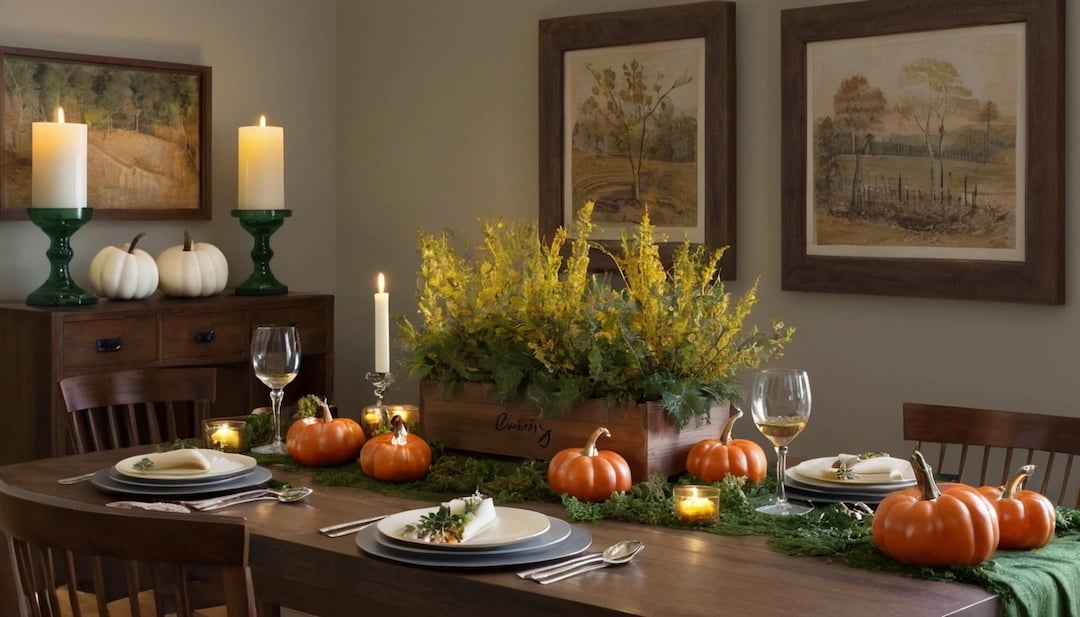

"Falling" in Love
with Denmark's Delicious Autumn Flavors
Stepping out of my apartment in Copenhagen, a brisk wind brushes against my face, carrying smells of fallen leaves and faraway bonfires. It is autumn in Denmark—already my stomach growls in anticipation. I have lived in this fair Scandinavian country long enough to know what seasonal cuisine lies ahead of me.
There's something so magical about Danish food during the fall. It is a time of ripe harvest, and the weather has cooled down a bit to warm up to more hearty, comforting dishes. The Danes really have a way of taking these very basic, local ingredients and doing something really special with them. It is food that pretty much shows the geography of the country and its history—its influence from both land and sea.
There seems to be considerable reason for excitement over the culinary experiences that lie ahead, especially while wandering through cobblestone streets, with cafes where warmth and comfort look inviting and markets bustling with people. Traditional dishes enjoyed for generations meet modern twists on classic recipes as Danish autumn food is a celebration of flavor, tradition, and hygge—that untranslatable Danish concept of coziness and contentment.
This article will take you on a journey into autumn flavors throughout Denmark. We will look into some of the most treasured seasonal dishes and also find out the cultural significance certain foods hold, besides learning how to make a few Danish specialties right in your kitchen. So go ahead, grab that cup of warm gløgg, and let's get started on the delicious world of Danish Autumn cuisine.
The Soul of Danish Autumn Cuisine
But before we get to dishes, let's talk about what exactly sets the Danish autumn cuisine apart. It's really about embracing this season's bounty and creating dishes that provide warmth and comfort in shortening, cooling days.
Key ingredients you'll often find in Danish autumn dishes include:
Root vegetables: The vegetables that make the stars in most of the fall recipes are carrots, parsnips, beets, and potatoes. Apples and pears: These fruits show up to decorate autumnal sweets and savory dishes alike. Mushrooms: Foraging for wild mushrooms is a favorite fall pastime, and the earthy delights really come into their own in many a meal. Game meats: Venison, duck, and other wild meats are enjoyed during this season.
Preserved foods: Various pickles, jams, and other kinds of preserved foods made from summer's harvest find a way into autumn meals.
Now, let's check out some popular Danish autumn dishes along with their recipes to make at home.
Welcome to Scandi Home Heaven! We believe in transparency and want to disclose that some of the links on our site are affiliate links. This means that at no additional cost to you, we may earn a commission if you click through and make a purchase. We only recommend products and services we have personally used and believe will add value to our readers.
Your support helps us continue to provide high-quality content. Thank you!
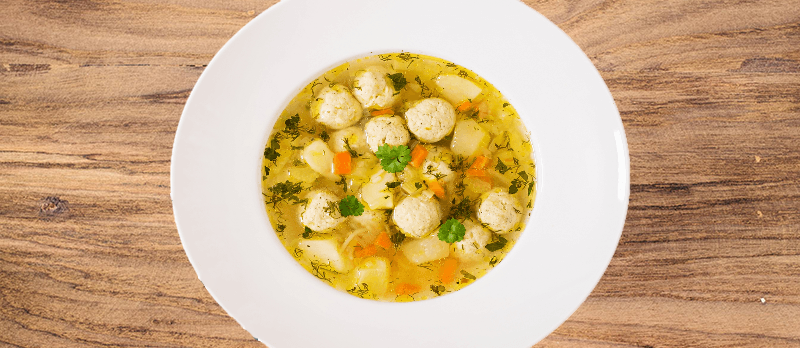

1. Hønsekødssuppe (Danish Chicken Soup)
When the weather turns chilly, there's nothing quite like a steaming bowl of chicken soup to warm you up. The Danish version, hønsekødssuppe, is a comforting classic that's often served as a starter for Sunday dinners or special occasions.
Ingredients:
1 whole chicken (about 3-4 lbs / 1.4-1.8 kg)
2 onions, quartered
3 carrots, roughly chopped
2 celery stalks, roughly chopped
1 leek, white and light green parts only, sliced
2 bay leaves
5-6 whole black peppercorns
Salt to taste
1 cup (190 g) small pasta shapes
For the meatballs (kødboller):
1/2 lb (225 g) ground pork
1 small onion, finely grated
1 egg
2 tbsp (15 g) all-purpose flour
1/4 cup (60 ml) milk
1/4 tsp ground nutmeg
Salt and pepper to taste
Instructions:
Place the whole chicken in a large pot and cover with cold water. Bring to a boil, then reduce heat and simmer for about 10 minutes, skimming off any foam that rises to the surface.
Add the onions, carrots, celery, leek, bay leaves, and peppercorns to the pot. Simmer gently for about 1.5 hours, or until the chicken is cooked through.
While the soup is simmering, prepare the meatballs. Mix all the meatball ingredients in a bowl until well combined. Shape into small balls (about 1 inch in diameter).
Once the chicken is cooked, remove it from the pot and set aside to cool slightly. Strain the broth and return it to the pot.
Bring the broth back to a simmer and add the pasta. Cook until the pasta is tender.
While the pasta is cooking, shred the chicken meat, discarding the skin and bones.
Gently drop the meatballs into the simmering broth and cook for about 5 minutes, or until they float to the surface and are cooked through.
Return the shredded chicken to the pot and season the soup with salt to taste.
Serve hot, garnished with fresh parsley.
This hearty soup is the epitome of Danish comfort food. The tender chicken, flavorful broth, and delicate meatballs come together to create a dish that's both nourishing and satisfying. It's the perfect way to warm up on a crisp autumn day.
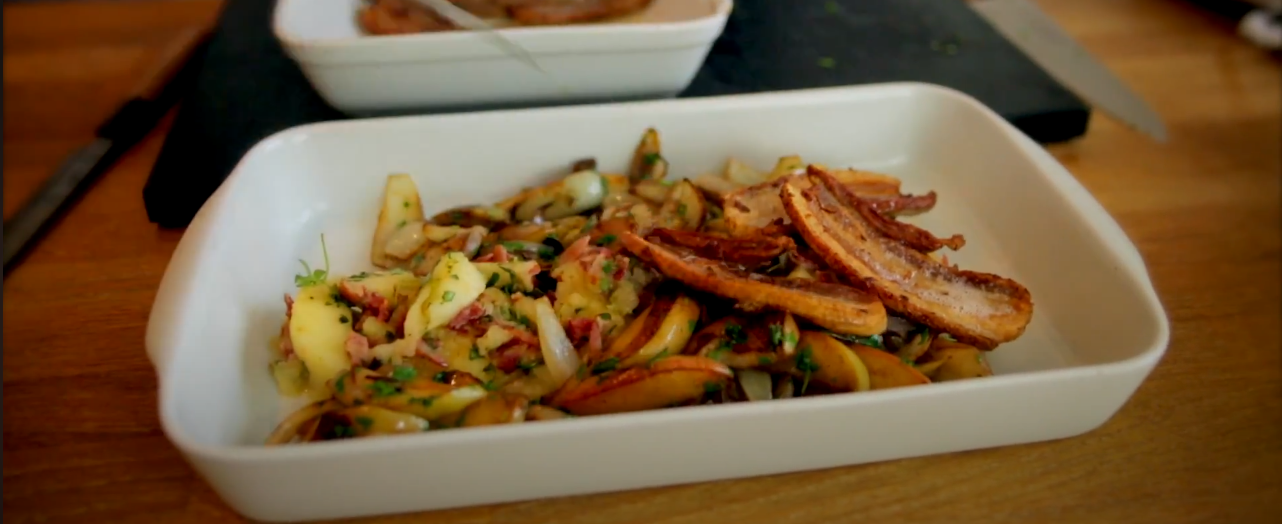

2. Æbleflæsk (Apple Pork)
Æbleflæsk is a traditional Danish dish that perfectly captures the essence of autumn. It combines two quintessential Danish ingredients – pork and apples – in a simple yet delicious way.
Ingredients:
1 lb (450 g) thick-cut bacon, diced
4 large apples, peeled, cored, and sliced
1 large onion, thinly sliced
2 tbsp (30 g) butter
2 tbsp (30 g) brown sugar
1 tsp fresh thyme leaves
Salt and pepper to taste
Instructions:
In a large skillet or Dutch oven, cook the diced bacon over medium heat until crispy. Remove the bacon with a slotted spoon and set aside, leaving the fat in the pan.
Add the sliced onion to the pan and cook in the bacon fat until soft and translucent, about 5 minutes.
Add the butter to the pan and let it melt. Then add the sliced apples, brown sugar, and thyme. Stir to combine.
Cook the apple mixture, stirring occasionally, until the apples are soft but still hold their shape, about 10-15 minutes.
Return the crispy bacon to the pan and stir to combine. Season with salt and pepper to taste.
Serve warm with slices of rye bread on the side.
Æbleflæsk is typically served as a main course, often with rye bread on the side. The combination of salty bacon, sweet apples, and aromatic onions creates a perfect balance of flavors that embodies the Danish approach to cooking. It's a dish that's both rustic and refined, and it's sure to become a fall favorite in your home.
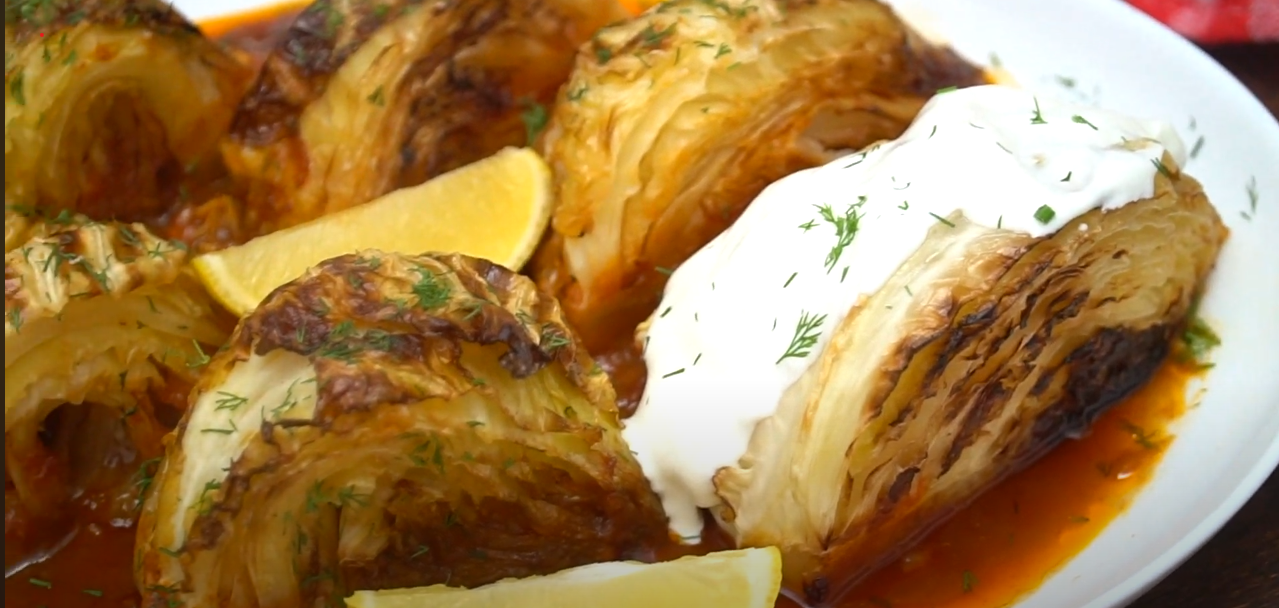

3. Brunkål (Caramelized Cabbage)
Brunkål, which translates to "brown cabbage," is a classic Danish side dish that's particularly popular in the autumn and winter months. Don't let its humble appearance fool you – this slow-cooked cabbage dish is packed with flavor and is the perfect accompaniment to roasted meats.
Ingredients:
1 large head of green cabbage, cored and sliced
1/4 cup (60 g) butter
1/4 cup (50 g) brown sugar
1/4 cup (60 ml) apple cider vinegar
1 tsp caraway seeds
Salt and pepper to taste
Instructions:
In a large, heavy-bottomed pot or Dutch oven, melt the butter over medium heat.
Add the sliced cabbage to the pot and stir to coat with the melted butter.
Sprinkle the brown sugar over the cabbage and stir to distribute evenly.
Add the apple cider vinegar and caraway seeds. Stir to combine.
Reduce the heat to low, cover the pot, and let the cabbage cook slowly for about 1.5 to 2 hours, stirring occasionally.
As the cabbage cooks, it will release its liquid and begin to caramelize, turning a deep brown color.
Once the cabbage is very tender and caramelized, season with salt and pepper to taste.
Serve hot as a side dish.
The long, slow cooking process transforms the cabbage into a tender, sweet, and slightly tangy dish that's far more than the sum of its parts. The caramelization brings out the natural sweetness of the cabbage, while the caraway seeds add a subtle, earthy flavor that complements the sweetness perfectly.
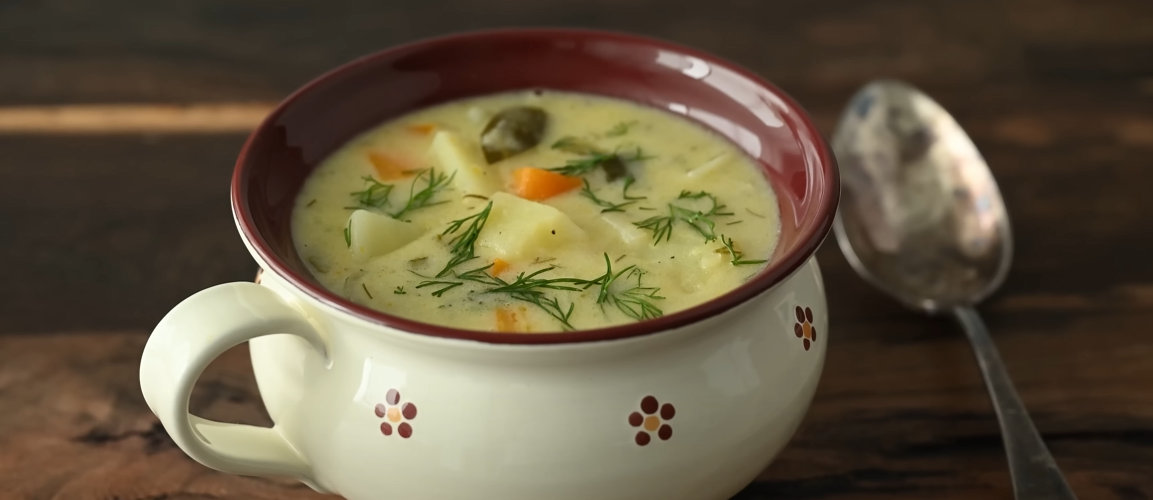

4. Kartoffelsuppe (Danish Potato Soup)
When the autumn chill sets in, there's nothing quite like a creamy potato soup to warm you up. This Danish version is simple yet satisfying, showcasing the country's love for potatoes.
Ingredients:
2 lbs (900 g) potatoes, peeled and diced
1 large onion, diced
2 leeks, white and light green parts only, sliced
4 cups (1 liter) vegetable or chicken broth
1 cup (240 ml) heavy cream
4 tbsp (60 g) butter
2 tbsp (15 g) all-purpose flour
1 tsp fresh thyme leaves
Salt and white pepper to taste
Instructions:
In a large pot, melt 2 tablespoons of butter over medium heat. Add the onions and leeks and cook until softened, about 5 minutes.
Add the diced potatoes and broth to the pot. Bring to a boil, then reduce heat and simmer until the potatoes are tender, about 15-20 minutes.
In a separate small saucepan, melt the remaining 2 tablespoons of butter. Add the flour and whisk to create a roux. Cook for 1-2 minutes until the raw flour smell disappears.
Slowly whisk the cream into the roux until smooth.
Add the cream mixture to the potato soup, stirring to combine.
Use an immersion blender to partially blend the soup, leaving some potato chunks for texture. Alternatively, you can transfer about half the soup to a blender, puree it, and return it to the pot.
Stir in the fresh thyme leaves and season with salt and white pepper to taste.
Serve hot, garnished with crispy bacon bits and chopped chives if desired.
This creamy, comforting soup is a staple in Danish homes during the cooler months. The combination of potatoes and leeks creates a velvety base, while the touch of thyme adds a subtle earthiness. It's the perfect dish to enjoy on a chilly autumn evening.

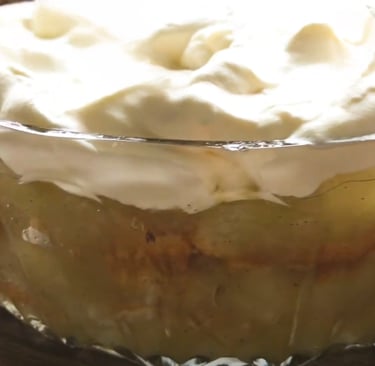
5. Æblekage Danish Apple Cake
No survey of Danish autumn food would be complete without a traditional dessert. Æblekage may translate as cake, but it is really a kind of layered apple dessert, somewhere between a trifle and a crumble. It's a delicious treat that uses up plenty of Denmark's autumn apples.
Ingredients:
For the apple compote:
2 lbs (900 g) apples, peeled, cored, and diced
1/4 cup (50 g) sugar
1 tsp cinnamon
1/4 cup (60 ml) water
For the breadcrumbs:
2 cups (120 g) breadcrumbs
1/4 cup (60 g) butter
1/4 cup (50 g) sugar
For assembly:
2 cups (480 ml) heavy cream, whipped
1/2 cup (50 g) toasted almonds, chopped
Instructions:
Make the apple compote. In a saucepan, combine diced apples, sugar, cinnamon, and water. Cook over medium heat, stirring occasionally, until apples are soft and have broken down into a chunky sauce, about 15-20 minutes. Let cool.
For the breadcrumbs: In a large skillet over medium heat, melt the butter. Add the breadcrumbs and sugar; stir constantly until the crumbs are golden brown and crispy. Be sure to watch for burning. Set it aside while it cools off.
To assemble the æblekage, you'll need a large glass bowl or individual serving glasses. Start with a layer of the toasted breadcrumbs at the bottom, then add some of the cooled apple compote.
Top with a layer of whipped cream.
Repeat the layers until all the ingredients have been used up, finishing with a layer of whipped cream on top.
Sprinkle the toasted almonds over the top layer of cream.
Refrigerate for at least an hour to allow flavors to meld before serving.
Æblekage is served cold, so it's refreshing at the end of a filling autumnal meal. There is something very Danish about this sweet, spiced apples and the crunchy breadcrumb topping, finished with creamy whipped topping—this contrast of textures and flavors that mirrors so much of the Danish pastries.
Getting into a Danish Autumn Food Culture
As I complete this culinary odyssey through autumn offerings in Denmark, what strikes me about these dishes is the way in which each of them actually mirrors the Danish way of thinking when it comes to food and life. Emphasis is placed on simplicity, quality ingredients, careful preparation to bring out their flavors, but also conviviality—so many of these are meant to be shared with family and friends.
What is especially interesting about Danish autumn cuisine is the balance of tradition and innovation. On one hand, many of these recipes have been passed down through generations, while Danish chefs and home cooks certainly do not fear putting a personal spin on the classics, either incorporating new ingredients or techniques while finding a way to maintain the essence of the original alive.
As days grow shorter and cooler, I find myself almost waiting to recreate some of these Danish autumn dishes in my own kitchen. There's something deeply satisfying in chopping vegetables for a hearty soup or slowly caramelizing cabbage on a chilly evening. It's not just about the result—a delicious meal—but even more about the process of creating something warm and comforting from plain ingredients.
So, whether you're traveling to Denmark or just want to add a bit of Danish autumn to your own table, I encourage you to give these recipes a try. Get some friends along, light a few candles, and enjoy a cozy evening graced with good food and good company. Really, that's what Danish autumn cuisine is all about.
And who knows, you might find yourself dreaming of those cobblestone streets many months later, smelling apples and cinnamon, wafting out of bakery windows. For the Danish autumn flavors seem to have the tendency to burrow deep inside your heart – not to mention your taste buds – when well into the next year the season's gone.
Welcome to my world of creative expression! Based in the heart of Copenhagen but reaching customers worldwide, I bring over 500 unique designs to life on t-shirts, hoodies, mugs, and more. Passionate about graphic design, I combine Nordic inspiration with global appeal to offer stylish, high-quality merchandise through Shopify/Printify and Teepublic. Whether you’re looking for a cozy sweatshirt or a personalized Coffee Mug, each product is crafted to make everyday moments extraordinary.
Explore, express, and enjoy!
Advertisment for our Merchndise Shop












